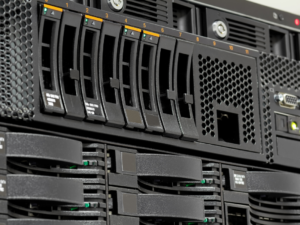In the realm of modern networking, Software-Defined WAN (SD-WAN) has emerged as a revolutionary solution for enhancing connectivity and network management. As businesses are increasingly relying on cloud-based applications and services, the need for agile, secure, and cost-effective wide area network solutions has never been greater. In this blog post, we will delve into the benefits of implementing SD-WAN, as well as discuss key implementation strategies that can help businesses leverage the full potential of this technology.
One of the most important aspects of SD-WAN is its ability to optimize network performance and improve application access across distributed locations. However, it’s crucial to understand the potential challenges and pitfalls associated with implementing SD-WAN, as well as the best practices for overcoming them. By gaining a comprehensive understanding of SD-WAN and its implementation strategies, businesses can effectively transform their wide area network infrastructure to meet the demands of the modern digital landscape.
Understanding SD-WAN

Assuming you are new to the concept of Software-Defined WAN (SD-WAN), it is essential to understand the foundational principles and components that make up this transformative technology. SD-WAN is a software-based approach to managing wide-area networks. It simplifies the way businesses manage and optimize their network connections by using software to automate the provisioning and management of network devices.
Core Components of SD-WAN Architecture
To comprehend SD-WAN, it is crucial to grasp its core components. SD-WAN architecture typically consists of a centralized controller, edge devices, and an overlay network. The centralized controller provides a single point of orchestration for the entire network, while edge devices establish the network connectivity at branch offices. The overlay network is what allows applications to be transported across the WAN and is crucial for providing the intelligence and security features that SD-WAN is known for.
How SD-WAN Transforms Traditional Networking
To understand the impact of SD-WAN, it is important to recognize how it transforms traditional networking. With traditional networks, organizations often deal with complex, inflexible, and expensive networking configurations. SD-WAN simplifies this by abstracting the network layer, making it easier to manage and more cost-effective. It also allows for greater agility, enabling organizations to dynamically adapt to changing network conditions and application performance needs.
With SD-WAN, businesses can achieve greater visibility and control over their network infrastructure, leading to improved application performance, enhanced security, and cost savings. This transformation in networking allows organizations to efficiently utilize multiple network connections, such as MPLS, broadband, and LTE, to meet their specific needs, resulting in a more resilient and agile network.
Benefits of Deploying SD-WAN
Some businesses are still hesitant to adopt Software-Defined Wide Area Networking (SD-WAN) due to concerns surrounding the transition and the perceived complexity of the technology. However, there are numerous benefits to implementing SD-WAN that make it a worthwhile investment for organizations of all sizes. If you are considering upgrading your network infrastructure, exploring the benefits of SD-WAN is essential to understanding how it can positively impact your business.
Cost Reduction through Transport Independence
Reduction in operational and capital expenses is one of the primary advantages of SD-WAN. By utilizing multiple types of connections, such as MPLS, broadband, and LTE, SD-WAN allows for better cost management by reducing reliance on expensive private lines. This transport independence results in lower networking costs without sacrificing performance, which can significantly benefit businesses of all sizes.
Furthermore, with the ability to leverage less expensive broadband connections, organizations can reduce their reliance on costly MPLS links while still maintaining high levels of performance. This flexibility in transport options ultimately leads to greater cost savings and more efficient use of network resources.
Improved Application Performance and Agility
With a focus on agility and performance, SD-WAN provides a streamlined approach to managing and prioritizing network traffic. By utilizing intelligent routing and dynamic path selection, businesses can significantly improve application performance and responsiveness. This ensures that critical applications and services receive the necessary bandwidth and resources, leading to increased productivity and user satisfaction.
Improved application performance also enables businesses to swiftly adapt to changing network demands and maintain a competitive edge in their respective industries. This increased agility allows for quick deployment of new applications and services, ultimately driving innovation and improving the overall customer experience.
SD-WAN’s ability to optimize application performance and enhance agility makes it a valuable asset for businesses looking to improve their network infrastructure and keep pace with evolving technological requirements.
Enhanced Security Features
SD-WAN solutions encompass a range of robust security features that help businesses mitigate potential threats and ensure the integrity of their network. By incorporating advanced encryption, segmentation, and security protocols, SD-WAN offers enhanced protection against cyber attacks and unauthorized access.
Furthermore, the centralized management and visibility provided by SD-WAN allows for more efficient monitoring and enforcement of security policies across the entire network. This comprehensive approach to security ensures that businesses can maintain a secure and resilient infrastructure in the face of evolving cyber threats.
Simplified Network Management
Cost-effective and simplified network management is another key benefit of SD-WAN. By centralizing and automating network configurations, organizations can reduce operational complexities and improve overall efficiency. This results in a more streamlined approach to network monitoring and troubleshooting, ultimately saving time and resources.
The comprehensive visibility and control provided by SD-WAN enable businesses to easily manage network policies and traffic flows, leading to optimized network performance and a more seamless user experience. This simplified network management approach can be particularly advantageous for organizations with limited IT resources, allowing them to effectively manage their network without overwhelming technical intricacies.
Increased Network Reliability and Redundancy
Security and redundancy go hand in hand, and SD-WAN provides businesses with the enhanced reliability and redundancy required to maintain network uptime and operational continuity. By utilizing multiple transport connections and intelligent failover mechanisms, SD-WAN ensures that businesses can maintain uninterrupted network connectivity in the event of a link failure or outage.
For instance, in the event of a primary connection failure, SD-WAN can seamlessly reroute traffic to secondary links, minimizing downtime and ensuring business continuity. This reliability and redundancy result in a more robust and resilient network infrastructure, essential for businesses aiming to minimize the impact of potential disruptions.
Key Players and Vendors in the SD-WAN Market

To fully understand the landscape of SD-WAN, it is important to be aware of the key players and vendors in the market. These are the organizations that are driving innovation and providing solutions to businesses looking to implement SD-WAN technology.
Market Leaders and Innovators
An integral part of the SD-WAN market is the presence of market leaders and innovators. These players are constantly pushing the envelope, coming up with new and improved solutions that drive the industry forward. Their expertise and innovative approaches distinguish them as the ones to watch in the SD-WAN space. Companies like Cisco, VMware, and Silver Peak are among the front-runners, continually demonstrating their dedication to excellence in this evolving field.
Comparative Analysis of Vendor Solutions
| Vendor | Key Features |
| Cisco | Secure connectivity, application-based policies |
| VMware | Cloud-based management, centralized control |
| Silver Peak | High-performance SD-WAN, cloud integration |
It is crucial for businesses to understand the offerings of various vendors in the SD-WAN market. Each vendor brings a unique set of features and functionalities to the table, and comparing and analyzing these solutions is essential in making an informed decision. When considering a vendor for SD-WAN implementation, factors such as security, scalability, and ease of management should be taken into account. Thoroughly evaluating the options available will ensure that the chosen solution aligns with the specific needs and goals of the organization.
Implementation Strategies for SD-WAN
Despite the many benefits of implementing Software-Defined WAN (SD-WAN), the deployment process can be complex and challenging. Organizations need to carefully consider various implementation strategies to ensure a successful transition to SD-WAN.
Assessing Organizational Readiness
For organizations considering the adoption of SD-WAN, assessing their readiness for the transition is crucial. This involves evaluating the existing network infrastructure, understanding business requirements, and identifying potential challenges that may arise during the implementation process. Organizations must also assess their IT staff’s skills and determine whether additional training or resources are needed to support the new SD-WAN environment.
Key Considerations in Selecting SD-WAN Solutions
The selection of an appropriate SD-WAN solution is a critical decision for organizations. The choice of SD-WAN solution should align with the organization’s specific requirements, such as security needs, application performance expectations, and scalability. Organizations must carefully evaluate the features and capabilities of different SD-WAN offerings, considering factors such as centralized management, security integration, and support for cloud applications.
SD-WAN solutions must also be able to address the challenges of network visibility and control, application performance optimization, and seamless integration with existing network infrastructure.
Planning and Designing the SD-WAN Deployment

With a clear understanding of organizational readiness and the selection of an appropriate SD-WAN solution, the next step is to meticulously plan and design the deployment. This involves creating a detailed deployment strategy, defining implementation timelines, and establishing a clear roadmap for migrating to SD-WAN. Considerations for network security, compliance, and performance must also be integrated into the planning process.
Implementation teams should also test the SD-WAN deployment in a controlled environment and evaluate its performance before full-scale deployment.
Migration Strategies from Legacy WAN to SD-WAN
The migration from legacy WAN to SD-WAN is a significant undertaking for organizations. It requires a careful evaluation of the existing network architecture, identification of potential points of failure, and implementation of failover mechanisms to ensure a smooth transition. Organizations must also develop a comprehensive migration plan that includes testing, validation, and rollback procedures in case of unforeseen issues.
It is imperative to involve key stakeholders from different departments in the migration process to ensure alignment with business objectives and minimal disruption to ongoing operations.
Real-World Use Cases and Success Stories
Case Study: Retail Industry
To demonstrate the real-world impact of Software-Defined WAN in the retail industry, consider the case of a major global retailer facing network congestion and performance issues across its geographically dispersed stores. By implementing an SD-WAN solution, the retailer was able to optimize its network traffic, improve application performance, and enhance the customer experience. The centralized control and visibility provided by SD-WAN enabled the retailer to overcome the challenges of managing multiple connections and ensure seamless connectivity for its critical applications.
To further illustrate the success of SD-WAN in the retail sector, another example is a regional chain of stores that leveraged SD-WAN to securely connect its branch locations and maintain consistent network performance. This enabled the company to streamline operations, reduce costs, and adapt to changing business needs without compromising on network reliability.
Case Study: Healthcare Sector
For healthcare organizations, the need for a reliable and secure network infrastructure is paramount to ensure patient care and compliance with stringent regulations. In one such case, a large healthcare system deployed SD-WAN to enhance network performance, protect sensitive patient data, and enable seamless communication between its facilities and cloud-based applications. The implementation of SD-WAN not only improved network efficiency but also strengthened the organization’s security posture in the face of evolving threats.
It is worth noting that the agility and scalability of SD-WAN have enabled healthcare providers to adapt to the growing demand for telemedicine, remote consultations, and data-intensive diagnostic imaging while maintaining compliance with healthcare regulations.
Case Study: Financial Services Industry
Cases within the financial services industry showcase the transformative impact of SD-WAN on organizations’ network infrastructure and operations. A leading financial institution implemented SD-WAN to consolidate its network resources, enhance application performance, and securely connect its branch offices. The centralized management and visibility provided by SD-WAN empowered the institution to manage its network more efficiently and reduce operational costs.
Real-world examples in the financial services industry highlight how SD-WAN has enabled organizations to accelerate their digital transformation initiatives, enhance their cybersecurity posture, and improve the delivery of financial services to their customers, all while adhering to industry regulations and compliance requirements.
Overcoming Challenges and Mitigating Risks
Not surprisingly, implementing a Software-Defined WAN comes with its own set of challenges and risks. It is important for organizations to be aware of these potential obstacles and have strategies in place to mitigate them.
Technical Challenges during Implementation
On the technical side, organizations may face issues such as network compatibility, scalability, and performance optimization when implementing SD-WAN. These challenges can be mitigated through thorough testing, careful planning, and the use of industry best practices for network deployment and management. Additionally, having a team of skilled IT professionals who are well-versed in SD-WAN technology can help address and resolve technical challenges effectively.
Managing Organizational Change
Technical implementation is just one part of the equation. Organizational change is another significant challenge that organizations may encounter when adopting SD-WAN. Employees may resist the shift to a new networking paradigm, and this resistance could manifest in decreased productivity, increased errors, and other adverse effects. To overcome this challenge, organizations must focus on leadership and communication, providing training and education to help employees adapt to the new technology and its benefits.
Challenges related to organizational change can be mitigated through careful planning, communication, and employee engagement. Organizations should also consider the needs and concerns of their employees and involve them in the transition process to ensure a smooth and successful adoption of SD-WAN.
Security Considerations and Best Practices
An essential aspect of implementing SD-WAN is security. With the decentralization of network traffic and the use of public internet connections, organizations must consider the potential risks and vulnerabilities associated with SD-WAN implementation. Ensuring that security measures are in place is critical to mitigate these risks and protect sensitive data and network integrity.
Organizational policies, compliance with industry regulations, and security best practices must be implemented to mitigate the security risks associated with SD-WAN. Additionally, organizations should invest in security solutions that are specifically designed for SD-WAN to enhance their security posture and protect their network infrastructure.
Ensuring Compliance and Governance
Change management and compliance are essential aspects of SD-WAN implementation. Organizations must ensure that the adoption of SD-WAN complies with industry regulations, internal policies, and governance requirements. Change management processes should be in place to track and manage changes to the network infrastructure and ensure compliance with relevant governance frameworks.
Compliance and governance considerations are crucial for organizations to mitigate risks related to regulatory compliance and governance requirements. Failure to adhere to these standards and regulations could result in legal and financial repercussions for the organization.
The Future of SD-WAN and Emerging Trends
Unlike traditional networking technologies, Software-Defined WAN (SD-WAN) is continuously evolving to meet the changing demands of the digital landscape. As organizations strive for greater agility and performance, the future of SD-WAN is marked by a number of emerging trends that will shape its trajectory.
Integration with Cloud Services and Edge Computing
The integration of SD-WAN with cloud services and edge computing is a critical trend that is reshaping network architectures. The rapid adoption of cloud computing, combined with the proliferation of IoT devices and edge computing technologies, is driving the need for a more distributed and agile networking infrastructure. This integration allows organizations to leverage the scalability and flexibility of the cloud while optimizing network performance and security at the edge.
The Role of Artificial Intelligence and Machine Learning
Artificial intelligence (AI) and machine learning (ML) are increasingly being integrated into SD-WAN solutions to optimize network performance, security, and reliability. The advanced analytics and automation capabilities offered by AI and ML enable organizations to make real-time decisions, detect and mitigate security threats, and predict network behavior. These technologies are powering the evolution of SD-WAN from a static network infrastructure to an intelligent and adaptive networking solution.
AI and ML solutions play a pivotal role in providing predictive analytics, dynamic routing, and self-healing capabilities within SD-WAN, ultimately contributing to a more resilient and efficient network infrastructure.
Predictions for SD-WAN Advancements and Adoption
Role The future of SD-WAN will see continued advancements in security features, including encrypted traffic inspection and zero-trust security models to protect against evolving cyber threats. Enhanced integration with multi-cloud environments and the adoption of 5G technology will further drive the evolution of SD-WAN, providing organizations with greater flexibility and scalability to meet growing connectivity demands.
SD-WAN adoption is also expected to accelerate as organizations seek to manage a more distributed workforce and deployment of remote offices, driving the need for a more agile and reliable networking solution that can adapt to changing operational requirements.

Conclusion
Considering all points, it is evident that implementing Software-Defined WAN can greatly benefit organizations by providing improved network performance, increased security, and reduced costs. The ability to centrally manage and optimize network traffic, as well as easily add or remove branches, allows for greater agility and efficiency in the face of shifting business needs. Additionally, the advanced security features help organizations protect their valuable data and resources from potential threats. With the right implementation strategies in place, businesses can ensure a smooth transition to SD-WAN, maximizing the benefits and minimizing any potential disruptions.
In conclusion, exploring Software-Defined WAN is essential for any organization looking to modernize their network infrastructure and stay ahead in today’s digital landscape. By understanding the benefits of SD-WAN and carefully planning its implementation, businesses can position themselves for success in the ever-evolving world of networking technology.
FAQ

Q: What is Software-Defined WAN (SD-WAN)?
A: SD-WAN is a technology that allows businesses to seamlessly connect their branch offices and data centers over the internet, improving network performance and reducing costs. It leverages software-defined networking to prioritize and route traffic more efficiently, optimizing the use of available bandwidth.
Q: What are the benefits of implementing SD-WAN?
A: Implementing SD-WAN offers several benefits, including improved network performance, increased agility and flexibility, cost savings, enhanced security, and simplified management. It allows organizations to leverage multiple types of network connections, such as MPLS, broadband, and LTE, to ensure reliable and efficient connectivity for their branch locations.
Q: What are some implementation strategies for deploying SD-WAN?
A: When deploying SD-WAN, organizations should start by conducting a thorough assessment of their current network infrastructure and performance requirements. They should then develop a comprehensive implementation plan that includes selecting the right SD-WAN solution, determining the best connectivity options, and defining security and management policies. It’s important to involve key stakeholders and seek expert guidance to ensure a successful deployment.







